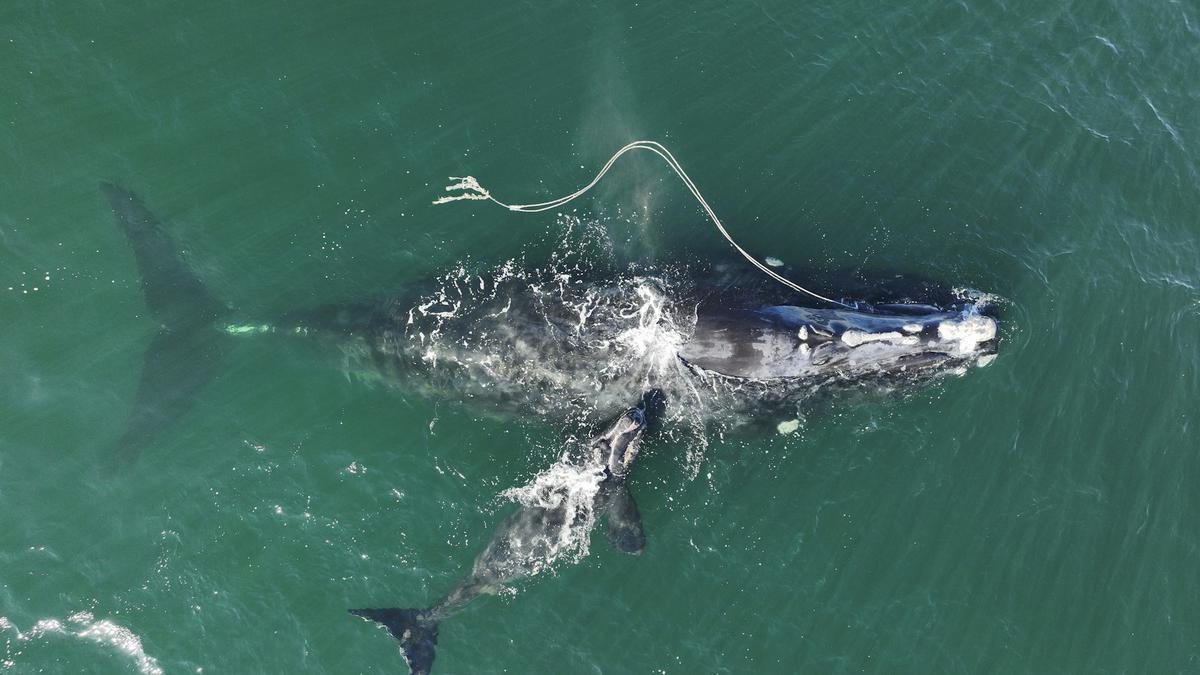
Female right whales may never breed after entanglement in fishing gear: study Premium
The Hindu
Female right whales may never breed after entanglement in fishing gear, a new study has found.
It sounds like a crime show episode at sea: In late January 2024, federal regulators learned that a dead female North Atlantic right whale had been sighted near Martha’s Vineyard, Massachusetts. The whale was towed to shore, where more than 20 U.S. and Canadian scientists converged to perform a necropsy, or animal autopsy.
On Feb. 14, the U.S. National Oceanic and Atmospheric Administration announced that the whale was #5120 in a catalogue that tracks individual right whales. Further, the agency said, rope that had been deeply embedded in the whale’s tail had likely come from lobster fishing gear in Maine.
Entanglement in fishing gear is a deadly threat to these critically endangered animals. Scientists estimate that before commercial whaling scaled up in the 18th and 19th centuries, there may have been as many as 10,000 North Atlantic right whales. Today, fewer than 360 individuals remain. Almost 90% of them have been entangled at least once.
When whales become entangled in fishing gear, they use extra energy dragging it as they swim. If the rope is caught around their mouths, they may struggle to feed and slowly starve. Ropes wrapped around whales’ bodies, flippers or tails can cut into the animals’ skin and become deeply embedded in their flesh, as happened to whale #5120. This can cause infections, chronic emaciation and damage to whales’ blubber, muscle, bone and baleen – the bristly structures in their mouths that they use to filter prey from the water.
North Atlantic right whales are legally protected, both internationally and in U.S. waters, including policies that seek to reduce deaths or serious injuries resulting from entanglements. However, even when entanglement does not kill a whale, it can affect individuals’ ability to reproduce, which is critically important for a species with such low numbers.
In a newly published study, we show that even entanglements scientists classify as “minor” have devastating impacts on female right whales and that, surprisingly, potential mothers who suffer “minor” entanglements have the lowest chance of starting to breed. As researchers with expertise in marine biology, ecology and statistics, we believe our findings underline the urgent need for ropeless fishing gear that can reduce threats to the survival of this species.
Understanding reproductive patterns is essential for supporting species that are critically endangered. North Atlantic right whales historically started breeding by around 9 years of age and gave birth to a single calf every three to four years thereafter for several decades.

In a study published in the journal Mammalian Biology on December 23, 2024, researchers compared the calls of Asian elephants based on their age, sex, and behaviour. They found the duration of trumpets remained fairly consistent across all age classes for both male and female Asian elephants but roars and roar-rumbles got longer with age.

The STS-63 mission, more popularly dubbed as the near-Mir mission, was a successful mission that spanned from February 3-11, 1995. A mission that served as a dress rehearsal for later missions that would rendezvous and dock with Mir, STS-63 reeled off a number of firsts. A.S.Ganesh tries and lists them out for you…











